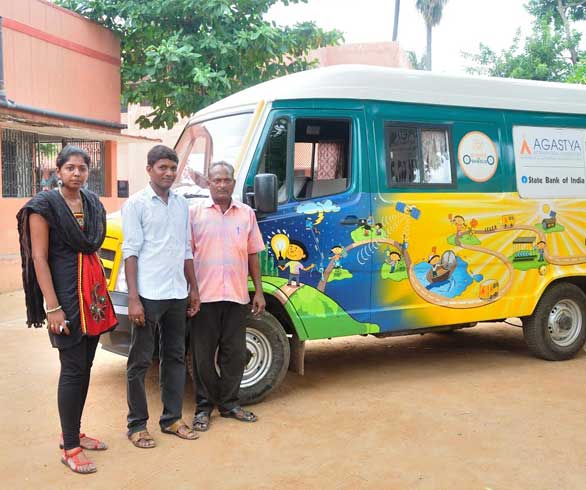When the world is evolving, shouldn’t education advance as well? Meet Nagamani from Agastya International Foundation as she shares this story.
A group of sixth graders can be seen huddled together. A class is in progress but surprisingly, the books have been packed away. Students intently look at the trainer, hanging on to her every word. The blackboard is there, but seldom used. And that’s because the children are learning not from the conventional method of the book and the board, but from over 200 models in science. Nagamani, the local trainer with Agastya, has just made science more reachable and enjoyable.
Agastya International Foundation is a Bangalore based NGO that started its Vizag operations in January 2015 and is taking hands-on science education to rural and underprivileged sections of India. Operating one of the largest hands-on learning programs, they use educational mobile vans and science centres to impart learning to many children from economically disadvantaged backgrounds. Their working model is based on donor-sponsored programs, and when one was forged with HPCL for Visakhapatnam district, two teaching resources were identified. HPCL provided the resources for a mobile van and also identified various GVMC schools as the beneficiaries of their science program.Using pre-created unique learning models for Science, Mathematics, Arts, English and other subjects, instructors are trained on how to engage students in these schools.
In Visakhapatnam, Nagamani and her colleague visit GVMC schools with their van. ‘I feel happy to see children enjoy these sessions’, she shares. She goes on to add that this short span of teaching in the city has been a fascinating experience. ‘Children have innovative thought processes. If we can encourage them, they are capable of not only understanding a subject, but implementing it in real time as well.’ In an interesting incident she narrates that in one of the schools they had demonstrated a periscope. The very next day a student prepared a periscope out of two badminton racquets. ‘To get the idea was one thing, but to practically create the periscope has sparked something within the child’ she shares. With only one mobile van at their disposal, Nagamani and her colleagues go about the GVMC schools conducting programs. Besides this, they conduct summer camps too. ‘During holidays we conduct free training camps in schools of our choice or go to the centre to learn more.’
The classes they run last for a few hours on chosen days of the week. Peppered with jokes, anecdotes, stories and incidents, the atmosphere is lively. They also use this time to identify students who have potential and then train them to become peer-teachers. They hope that these programs will soon have a wider reach and perhaps they will be able to add more staff and also see a centre come up. The closest one right now is at Kuppam, Chittoor district, she shares.
At the threshold of an educational revolution, students and teachers are welcoming this change. For students, learning becomes an interactive experience while for teachers, the barriers to learning are overcome. And at a time when the very fabric of education is under question, this is an innovative effort worthy of praise.









